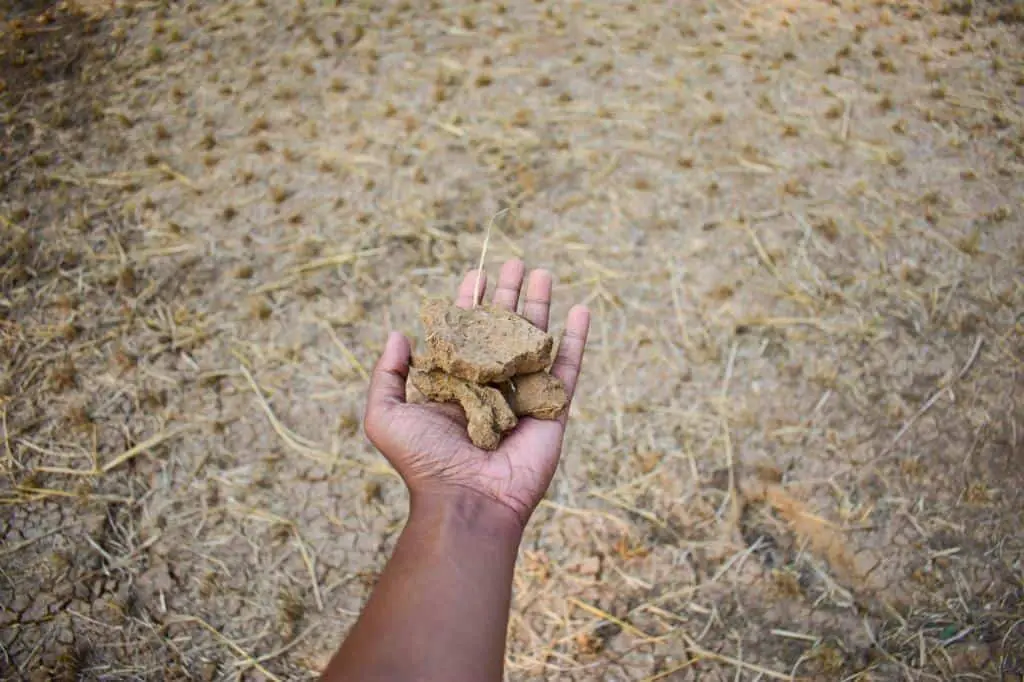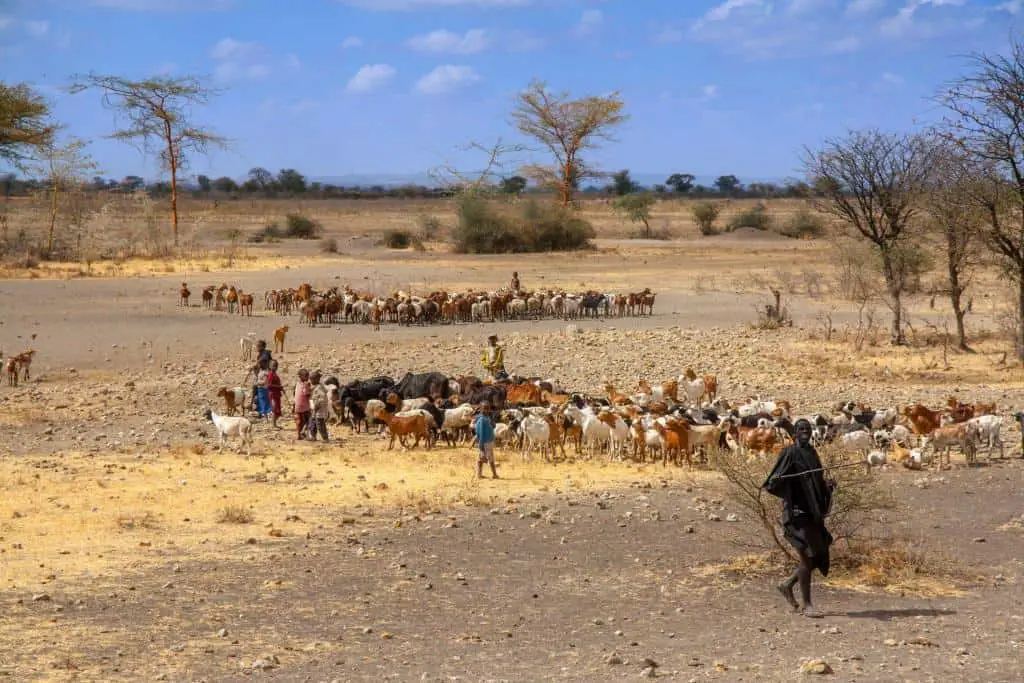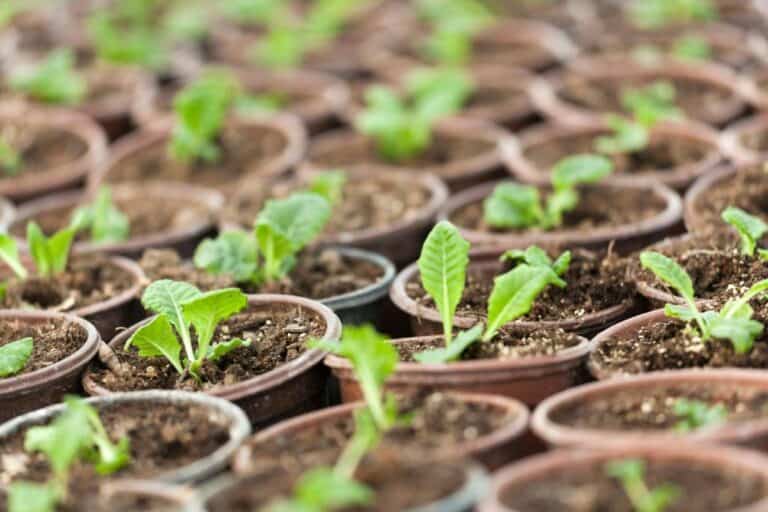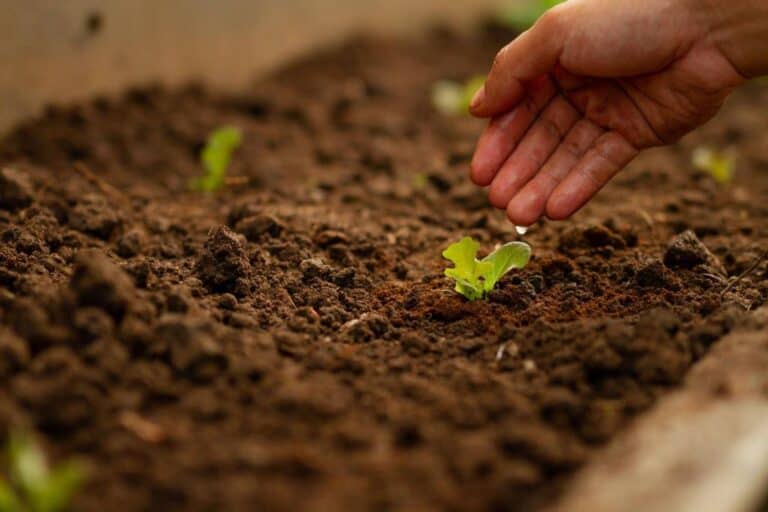How Do Dry Farmers Keep Moisture in the Soil?

In the heart of sun-scorched landscapes, where the earth cracks under the weight of drought, lies a remarkable tale of perseverance and ingenuity. Meet the guardians of the arid lands – the dry farmers. With an artistry honed through generations, these skilled cultivators have mastered the delicate dance of coaxing life from the parched soil, defying the odds stacked against them.
But how do they do it? How do these agricultural alchemists keep precious moisture locked within the barren earth? The secrets they hold are a testament to sustainable practices and the power of working hand in hand with nature. From ancient techniques handed down through time to cutting-edge innovations, dry farmers employ a repertoire of methods to embrace the challenge of cultivating crops where water is a scarce treasure.
Join us on an explorative journey through the enchanting world of dry farming as we unveil the captivating techniques they employ to safeguard soil moisture and ensure the fruits of their labor flourish against all odds.
Understanding Dry Farming
Dry farming, a captivating agricultural technique, dates back centuries and thrives in regions where water is scarce. This practice revolves around cultivating crops without artificial irrigation, relying instead on the nurturing embrace of natural precipitation.
Moisture retention in dry farming allows plants to endure prolonged periods of drought with resilience. This profound connection between nature and agriculture has shaped the traditions of many cultures and continues to be a sustainable solution for arid regions worldwide.
Historically, dry farming emerged as a necessity in regions where water scarcity dictated farming practices. The ancient civilizations of Egypt, Mesopotamia, and the Indus Valley ingeniously utilized this technique to cultivate crops such as wheat, barley, and millet.
With its roots tracing back to millennia, dry farming showcases the ingenuity and adaptability of humanity in the face of environmental challenges.
Benefits of Dry Farming
The benefits of dry farming are multifold, ranging from environmental to economic.
- Water Conservation: The most prominent advantage of dry farming is its water-saving prowess. By relying solely on natural precipitation, this method eliminates the need for excessive irrigation, reducing the strain on local water resources.
- Soil Health: Dry farming practices improve soil structure and encourage the development of healthy microbial communities. The addition of organic matter enhances soil fertility and water-holding capacity, creating an environment conducive to plant growth.
- Resilience to Climate Change: Dry farming equips crops with the ability to withstand periods of drought, making it a resilient approach in the face of changing climate patterns.
- Reduced Energy Consumption: Traditional irrigation methods demand significant energy for pumping and distribution. Dry farming eliminates this energy-intensive aspect, contributing to a smaller carbon footprint.
- Produce with a good flavor: Some proponents of dry farming contend that the stress that limited water availability places on crops actually improves the flavor of the produce. The concentrated sugars and nutrients can result in exceptionally tasty fruits and vegetables.
Are There Any Disadvantages To Dry Farming?

Despite its advantages, dry farming is not without its drawbacks, which are essential to consider when evaluating its feasibility. One significant challenge is the potential for lower yields compared to traditional irrigated agriculture.
Dry farming relies on utilizing natural rainfall and stored soil moisture, which can result in limited water availability during critical growth stages. Consequently, achieving optimal yields requires meticulous planning and management to ensure crops receive adequate moisture for their development.
Key Disadvantages of Dry Farming
- Yield Variability: Dry farming’s success is closely tied to weather patterns, making it susceptible to yield fluctuations due to irregular rainfall.
- Soil Preparation: Proper soil management is crucial for moisture retention. Inadequate soil preparation may lead to insufficient moisture availability for crop growth.
- Crop Suitability: Not all crops thrive under dry farming conditions. Selection of suitable drought-tolerant crops is vital for achieving satisfactory outcomes.
- Localized Knowledge: Implementing dry farming effectively requires a deep understanding of the local climate, soil characteristics, and plant requirements.
Dry Farming Limitations in Keeping Moisture in the Soil
Dry farming, with its captivating history and sustainable principles, does come with certain limitations. The key challenge lies in retaining moisture in the soil to sustain crops during extended dry periods.
Let’s delve into the various factors that contribute to this predicament and explore potential solutions that can enhance the efficacy of dry farming.
Factors Limiting Moisture Retention:
- Limited Precipitation: Dry farming heavily relies on natural rainfall, which can be unpredictable and insufficient to meet the water needs of crops.
- High Evaporation Rates: Arid climates often experience intense sunlight and high temperatures, leading to rapid evaporation of moisture from the soil.
- Sparse Vegetation Cover: Without supplemental irrigation, crops struggle to establish a dense canopy, leaving the soil exposed to direct sunlight and wind, exacerbating evaporation.
- Soil Structure and Composition: The ability of soil to retain moisture depends on its texture and structure; sandy soils drain water quickly, while clay soils may suffer from poor drainage and reduced water availability to plants.
How Do Dry Farmers Keep Moisture in the Soil?
Before we delve into the techniques employed by dry farmers, it is essential to grasp the challenges they face. Arid and semi-arid regions typically experience limited and erratic rainfall, making water a scarce and precious resource. Without proper moisture management, crops are at risk of wilting, stunting, or failing altogether.
Therefore, dry farmers must adapt their practices to work in harmony with nature and optimize every drop of water that falls on their fields.
1. Conservation Tillage
Conservation tillage is a cornerstone of dry farming techniques. Unlike traditional tillage, which involves deeply plowing the soil, conservation tillage aims to disturb the soil as little as possible.
By leaving crop residues and organic matter on the surface, farmers create a protective shield against evaporation, minimizing water loss. This practice also improves soil structure, enhancing its water-holding capacity and reducing runoff during heavy rainfall.
2. Mulching
Dry farmers can retain soil moisture by mulching. By covering the soil with a layer of organic or inorganic materials, such as straw, leaves, wood chips, or plastic sheets, evaporation is significantly reduced. Mulches act as a barrier between the soil and the sun, shielding the ground from intense heat and preserving moisture levels. Additionally, organic mulches decompose over time, enriching the soil with nutrients and promoting microbial activity.
3. Drip Irrigation
While it may seem counterintuitive to use irrigation in dry farming, drip irrigation is a precise and water-efficient method that some dry farmers adopt. Unlike conventional sprinkler systems, which can lead to substantial water loss through evaporation and runoff, drip irrigation delivers water directly to the plant’s root zone. This targeted approach ensures that the moisture reaches the crops where it is needed most, reducing waste and maximizing water utilization.
4. Crop Rotation and Cover Crops
Maintaining soil health is crucial for dry farmers, and one way they achieve this is through crop rotation and cover crops. By alternating the types of crops grown in their fields, farmers can prevent the depletion of specific nutrients and reduce the risk of pests and diseases. Additionally, cover crops, such as legumes or grasses, are grown during fallow periods to protect and nourish the soil. These plants fix nitrogen, improve soil structure, and prevent erosion, enhancing the overall resilience of the farming system.
5. Rainwater Harvesting
In regions with infrequent but intense rainfall, rainwater harvesting systems offer a sustainable solution to capture and store water. Dry farmers utilize various rainwater harvesting techniques, including the construction of rainwater catchment basins, contour trenches, and rooftop collection systems.
By collecting rainwater during the wet season, farmers can store it for later use during dry spells, supplementing their water supply and reducing their reliance on external sources.
6. Windbreaks
The strong winds common in arid regions can accelerate soil moisture loss through evaporation. To counter this, dry farmers often plant windbreaks or shelter belts composed of trees or shrubs around their fields.
These barriers act as a natural shield, reducing wind speed and creating a microclimate that is less prone to water evaporation. Additionally, windbreaks can prevent soil erosion, further safeguarding the precious topsoil and moisture content.
7. Soil Amendment and Enhancement
To improve the water retention capacity of the soil, dry farmers regularly amend their fields with organic matter, such as compost, manure, or green manure cover crops. These additions increase soil porosity, allowing it to absorb and hold more water.
Additionally, the presence of organic matter supports a thriving soil ecosystem, where beneficial microorganisms help break down nutrients and make them available to plants.
More: Productive Soil vs. Fertile Soil: What’s the Difference?
What Crops Are Suitable for Dry Farming?
When it comes to dry farming, the choice of crops plays a pivotal role in ensuring a successful harvest despite limited water availability. Opting for drought-resistant crops is essential for maximizing yield in arid conditions. A variety of crops are well-suited for dry farming, showcasing their adaptability and resilience.
Diverse Drought-Resistant Crops:
- Grains: Crops like sorghum, millet, and certain varieties of wheat have evolved to thrive with minimal water. Their deep root systems enable them to tap into moisture deeper within the soil.
- Legumes: Chickpeas, lentils, and certain types of beans are known for their ability to fix nitrogen in the soil, enhancing its fertility even in harsh conditions.
- Tubers and Roots: Drought-tolerant options include sweet potatoes and yams, which store moisture within their roots and tubers, helping them survive extended dry spells.
- Oilseeds: Crops like sunflowers and safflower have proven their ability to withstand drought while producing valuable oil-rich seeds.
- Fruits: Some fruit trees, such as figs and pomegranates, have adapted to arid environments, producing flavorful fruits with minimal water inputs.
Deep Root Systems
Dry farming encourages plants to develop extensive root networks that reach deep into the soil. This allows them to tap into water reserves located beyond the reach of traditional shallow-rooted crops.
Slow and Steady Growth
Dry-farmed plants often grow more slowly. While this might seem like a disadvantage, it actually works to their advantage. Slower growth means reduced water demand, enabling plants to make the most of available moisture.
Adaptation to Soil and Climate
The suitability of a crop for dry farming isn’t solely based on its inherent drought resistance. Factors such as soil type, temperature variations, and the length of the growing season all influence a crop’s success.
For instance, certain legumes might excel in one region’s dry farming system due to favorable soil characteristics, while grains could dominate in another due to temperature suitability.
Crop Rotation and Diversity
To further enhance dry farming’s effectiveness, employing crop rotation and diversification is key. By alternating between different crops, the soil’s nutrient balance can be maintained, pests can be controlled, and the overall health of the ecosystem can be preserved. This practice also minimizes the risk associated with relying on a single crop, which may be more susceptible to particular challenges brought about by the dry farming environment.
Read: Why Is Volcanic Soil So Fertile? Nature’s Agricultural Potential
How Much Water Do Dry Farming Techniques Save?
The water-saving potential of dry farming techniques is a compelling reason for their adoption in water-scarce regions. These techniques encompass a range of strategies that collectively result in substantial water savings when compared to conventional irrigation methods. Conservation tillage, a cornerstone of dry farming, involves minimal disturbance of the soil, reducing moisture loss through evaporation. This, coupled with practices like mulching, where soil is covered to prevent water evaporation, and drip irrigation that delivers water directly to plant roots, leads to remarkable conservation.
Practical Water Savings
- Conservation Tillage: Reduced soil disturbance prevents water loss through evaporation.
- Mulching: Protective soil cover decreases water evaporation, maintaining soil moisture.
- Drip Irrigation: Precise water delivery to roots minimizes wastage due to surface evaporation.
Impact on Water Consumption
Dry farming techniques can result in a substantial reduction in water consumption. Water savings of up to 50% or even more are achievable when these strategies are effectively implemented. This not only addresses the pressing issue of water scarcity but also supports sustainable agricultural practices by optimizing resource use. As regions around the world face the challenges of water availability and climate change, embracing such water-efficient approaches becomes crucial.
Conclusion
In conclusion, dry farming is a time-tested and sustainable approach to agriculture in arid and semi-arid regions. By employing conservation tillage, mulching, drip irrigation, crop rotation, rainwater harvesting, windbreaks, and soil enhancement practices, dry farmers can effectively retain moisture in the soil and ensure the viability of their crops even in challenging environmental conditions.
These methods not only preserve water resources but also contribute to the overall health of the soil and the surrounding ecosystem. As we continue to face global water challenges, the principles and techniques of dry farming hold valuable lessons for fostering a more resilient and sustainable agricultural future.
FAQs on Dry Farming Keep Moisture in the Soil
Is dry farming a sustainable agricultural practice?
Yes, dry farming is considered a sustainable approach as it minimizes water usage and promotes long-term soil health without relying on irrigation.
Can I practice dry farming in my backyard garden?
While dry farming is typically used on a larger scale, some of its principles, like mulching and water-wise plant selection, can be applied to home gardens.
What regions are most suitable for dry farming?
Dry farming is best suited for regions with low annual precipitation, such as arid and semi-arid climates, where water resources are limited.
How do dry farmers deal with pests and diseases without excessive water usage?
Dry farmers often employ natural pest control methods and disease-resistant crop varieties. Proper soil management and crop rotation also contribute to pest and disease control.
What are the benefits of dry farming?
Benefits of dry farming: Dry farming offers several advantages, including reduced water usage, lower irrigation costs, and increased soil health. By minimizing water loss through evaporation and optimizing moisture retention, dry farmers promote sustainable agriculture in water-scarce regions, fostering resilience against droughts and climate uncertainties.
Can dry farming be successful in all climates?
Success of dry farming in different climates: Dry farming can be successful in arid and semi-arid climates with limited and erratic rainfall. However, its effectiveness depends on factors such as soil type, crop selection, and the availability of moisture-conserving practices. In regions with extremely arid conditions, additional measures like rainwater harvesting may be necessary to supplement water needs.
Are there any disadvantages to dry farming?
While dry farming offers numerous benefits, it also comes with challenges. Dry farmers may experience lower yields compared to irrigated agriculture, and success heavily relies on proper soil preparation and weather conditions. Additionally, not all crop types are suitable for dry farming, and it requires a deep understanding of the local environment to implement it effectively.






